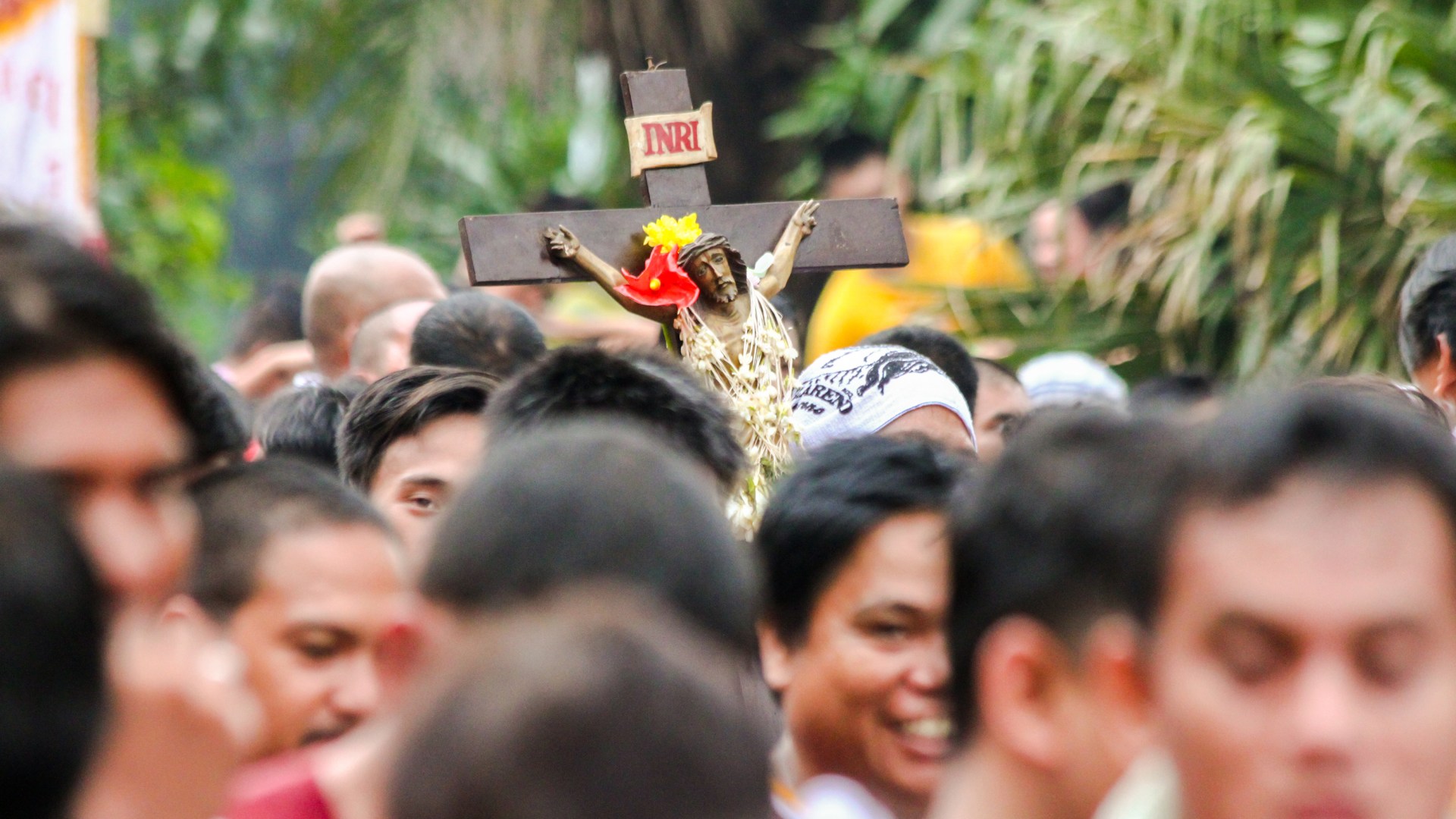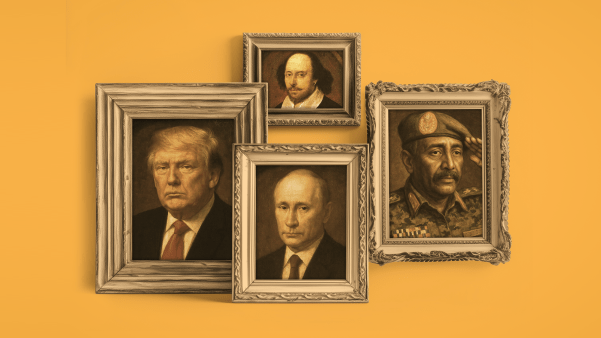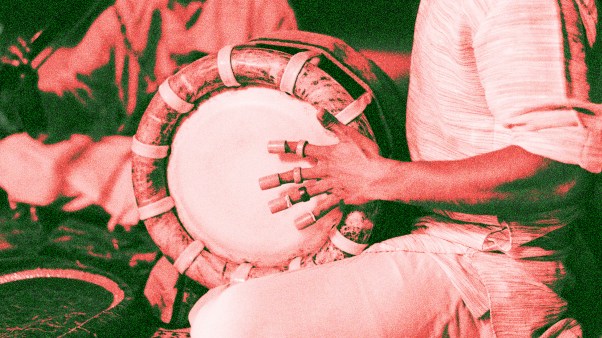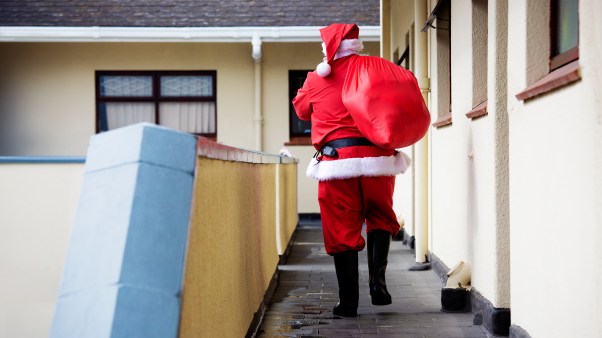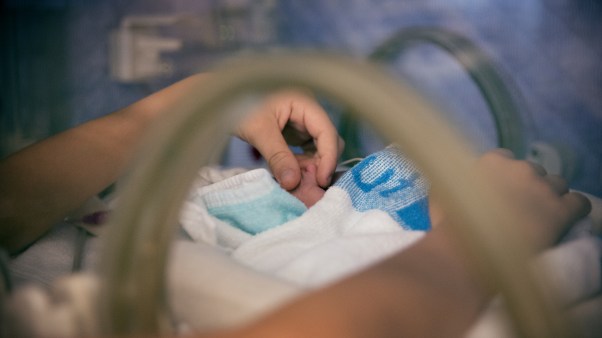Few events in the Philippines have been more anticipated than Pope Francis’s 2015 visit to the home of the world’s third-largest Catholic population. Six million people attended a parade on the final day of the pope’s trip, a meeting he decided to make following one of the strongest cyclones ever recorded. During mass with survivors of Typhoon Haiyan, Pope Francis declared, “I have come to tell you that Jesus is Lord. And he never lets us down.” Stirred by his homily, many were overcome with tears.
Pain is not an anomaly for Filipinos. Suffering punctuates centuries of Philippine colonial and contemporary history. But this affliction has not affected the religiosity of Filipino Catholics. Indeed, so inspired by his experience in the country, Pope Francis tweeted that “the Philippines is witness to the youth and vitality of the Church.” The Filipino translation of the tweet went viral and was retweeted more than 70,000 times.
Given that the state is secular, it is a mistake to say that the Philippines is a Catholic country. But with 80 percent of the population professing the faith, the impression remains the same anyway—especially given the fact that the country sits in a region dominated by Buddhism and Islam. From politics to education to fiestas, Catholicism pervades much of Philippine society. According to a recent survey, 77 percent of Filipino Catholic adults consider religion to be “very important” in their lives.
Despite missionary presence in China and Japan, Christianity has historically struggled to put down spiritual roots in Asia. So what makes it stick in the Philippines? Some credit belongs to the religious zeal of the Spanish regime. But by and large, the faith thrives today because Filipinos appropriated Catholicism to make it their own religion.
A colonial enterprise
When the Spaniards arrived in the Philippines in 1521, more than 100 ethnolinguistic groups already occupied the archipelago of more than 7,000 islands. While they did not exist as one country, the islands were nevertheless connected to each other via trade routes and slave-raiding that included other territories in the region. Trade, in fact, existed before the 10th century.
The islands also teemed with religious diversity. The Ifugao in northern Luzon, the Tagalog in southern Luzon, the Visayan in the central islands, and the various indigenous communities in Mindanao each had their own cosmology, code of ethics, and mode of worship. Muslim communities were also scattered around the islands, including Manila.
Locals first came into contact with Catholicism when Ferdinand Magellan and his crew showed up as part of the colonial race in the 16th century that competed for resources and the Christianization of unexplored territories. After meeting with Magellan, Rajah Humabon, the ruler of the island of Cebu, and his subjects embraced Christianity, though this may have been to avoid conflict with the conquistadors. But local resistance in nearby Mactan Island, headed by its ruler, Lapu-Lapu, led to the death of Magellan and his comrades.
Despite Magellan’s death, the Spanish sent other expeditions back to the Philippines. As the century wore on, expeditions became increasingly crucial for Spain. The crown believed that the Philippines would become a new and important source of revenue for the empire. It was Ruy Lopez de Villalobos’s trip in 1543 that named the islands Filipinas, in honor of Spanish King Philip II.
Spain’s close relationship with the Philippines was cemented after explorer Miguel Lopez de Legazpi discovered a route between the islands and Mexico, making trade between the two colonies—and the kingdom—possible. Legazpi set up a permanent Spanish outpost in Manila in 1571 and, after evicting its rulers and inhabitants, decided that the island would become the capital of the new colony. Legazpi built Manila in the style of a typical European town, with a plaza, cathedral, and public offices from which the entire archipelago was governed. Only Spaniards, however, could reside within the walled city. The natives—known like other indigenous communities in the New World as indios—had to resettle elsewhere.
As historian Samuel Tan notes, the goals of the Spanish regime in the Philippines could be summarized as: God, glory, and gold. Apart from expanding its trade, the evangelization of indios was a clear mission of the empire. Led by Father Urdaneta, Spanish Augustinian friars moved from Mexico to the Philippines upon the request of Philip II and became the first official Catholic missionaries in the country. The Dominicans, Recollects, Franciscans, and Jesuits followed suit over the centuries.
The Catholic fathers’ pattern of evangelization was standard. Under a policy known as reduccíon, the Spanish relocated natives from the mountains to the lowlands. Churches around the country were built through polos y servicios, a law which forced men between the ages of 16 to 60 years old to render labor for the local governor or the parish priest. The priests also became the de facto administrators of the Spanish regime in the towns in which they were assigned. This made them very powerful, even against local secular authorities. Given the small number of missionaries and administrators, the policy made governance and religious education efficient.
Although reduccíon was coercive, Catholic evangelization was not necessarily so. For example, mass baptisms were not practiced just because a datu (local leader) converted. Although some missionaries destroyed images (larawan), the majority relied on nonviolent persuasion to convince local converts to abandon their indigenous worship and practices.
The Jesuit historian John Schumacher claims “no whole people, at least prior to the 19th century, has ever in the history of the Church been so thoroughly evangelized as were the Filipinos.” The Christianization of the country was more than a change of heart of the people; the conversion included systematic lifestyle change. Friars made it a strict requirement for any native wanting to be baptized to have learned the tenets of Doctrina Cristiana, a document spelling out Catholic prayers, morality, and practices. Church leaders also taught catechisms—translated into vernacular languages—to young people. Friars ensured too that Christian teaching took over indigenous beliefs about restitution, sexual morality, and nature worship. Polygamy and slavery, for example, had to be renounced before baptism.
Catholicism’s influence affected everyday life and annual traditions. Church bells rang as a reminder for communities and families to recite the Angelus and other prayers. Mass attendance was also recorded every Sunday. In many cases, the Catholic pantheon of saints replaced local deities believed to be behind the agricultural cycle, though the holidays and festivals persisted—just under the banner of the patron saints. Consequently, by the 17th century, Catholicism had become the pervasive religion among lowland Filipinos, especially in Luzon and the Visayas.
Yet the Philippines’ Christianization was not a smooth process. Not all natives embraced the religion wholesale. In 1621, local leaders Bankaw and Tamblot led anti-Catholic uprisings on the islands of Leyte and Bohol. Over the centuries, Spanish forces also tried to penetrate some parts of Mindanao but resistance among Muslim communities relegated them to coastal areas. Muslim resistance involved what the Spaniards called juramentados, swordsmen who were ready to die for their cause. Many other indigenous communities in Mindanao—collectively called lumad (native)—retained their existing beliefs and practices.
Muslim communities in Mindanao never recognized the authority of the Spanish regime over their territories. In the local translation of the peace treaty signed in 1878 between Spain and the Sultanate of Sulu, the latter was only named a protectorate. But this provision did not keep Spain from including Sulu when the Philippines was handed over to the United States after its defeat in the Spanish-American War in 1899. This historical moment serves as a backdrop to secessionist movements, Moro insurgency, and the peace process in Mindanao.
Filipinizing Catholicism
Various documents of the Catholic church in the Philippines, including its local catechism, assume the Catholic faith is part and parcel of being Filipino. This idea obviously overlooks the presence of other religious minorities in the country, such as Islam, and the growing prominence of other Christian groups, like evangelicals and Iglesia ni Cristo (an indigenous church). But the assumption makes sociological sense for two reasons.
On one hand, Catholicism has become a cultural attribute, given the extent to which it affects everyday Filipino life. Over the centuries, Filipinos internalized Catholicism because church rituals related to their practical concerns. Indigenous religious practices were largely about livelihood, prosperity, healing, and safety. This understanding was very different from Christian theology that brought ethics and worship together. In this light, Catholic sacraments, beliefs, and objects interested indigenous Filipinos to the extent that they contributed to health and livelihood. Holy water, Latin prayers, and the intermediary role of saints fed into local beliefs.
This syncretisation became a significant factor in why Christianization did not completely eradicate indigenous practices. Even today, amulets with Latin prayers and other Catholic symbols are readily available outside Quiapo Church in Manila. The same church is home to the Black Nazarene, whose annual feast gathers millions of devotees every year in a procession around the old city of Manila. Towels that touch the image are believed to transmit miraculous powers of healing.
On the other hand, Catholicism has also become a religion that Filipinos use to empower themselves. This is a salient theme in much of Philippine historical writing. In his influential work, Pasyon and Revolution, historian Reynaldo Ileto makes the case that the natives drew from the Pasyon (or Passion) to understand their suffering at the hands of Spaniards. An epic narrative sung during Lent, the Pasyon recounts the suffering of Christ. During the Spanish period, clergy used this for religious socialization but natives received it in a different light. The suffering of Christ mirrored their own and empowered them in their struggle against the colonial regime.
One of the pitfalls of Spanish missionaries was a failure to train local clergy. Until the 20th century, movements calling for Filipino priests were often treated by the government with suspicion, as in the case of Cofradia de San Jose. The brotherhood of Filipino priests was set up by Hermano Pule, a local whose application to join an order was rejected in 1839. But the Spaniards eventually quashed the brotherhood, alleging it as heretical and rebellious.
During the American occupation in the first half of the 20th century, foreign clergy occupied the hierarchy of the Catholic church. While the church appointed Filipinos as parish priests, important positions like the archbishop of Manila were still held by non-Filipinos. After World War II, the Philippines became independent from the US, a political transition that increased the urgency of arguments to Filipinize religious orders. The reasoning was clear: Locals needed to take an active role in missionizing the country and the wider Asian region.
In 1957, six priests from different religious orders sent a memorial to the pope lamenting the inadequate number of trained Filipino clergy: “How can Catholic Philippines ever fulfill her providential mission in the Far East if the doors of the old religious orders and congregations do not really and sincerely open to admit and form native Filipino candidates?" The process was gradual, but by the 1970s, religious orders, schools, and the clergy in general became thoroughly Filipinized. It coincided with the martial law of President Ferdinand Marcos.
Indeed, in the latter half of the 20th century, the Catholic church played an important role as a public religion under Marcos's authoritarian regime. The president declared martial law in 1972 under the pretenses of countering an insurgency and the rise of Communists—justifications later found to be fabricated. Nevertheless, the Catholic hierarchy initially accepted the declaration, echoing the state mantra that “discipline was necessary for social progress.” But the situation grew only more severe: the police and military implemented a curfew and the government suspended the writ of habeas corpus, actions leading to various human rights abuses under the Marcos regime.
By the 1980s, parishes which had been organizing their respective communities to document and protest the excesses of military rule soon found themselves human rights abuse victims. Basic ecclesial communities in the countryside were harassed by the military and their religious leaders imprisoned. Some were even murdered. As the persecution carried on, the Catholic church was the only institution that could credibly contest the power of the state on behalf of the Filipino people. Religious leaders and lay people worked for the release of political detainees, operated alternative media, and preached against the military rule. In 1986, Cardinal Sin, the archbishop of Manila, made a radio broadcast calling on people to take to the streets to protest recent and allegedly fraudulent election results. The ensuing protest marked the beginning of the People Power Revolution that ultimately ended Ferdinand Marcos's long dictatorship.
A century of change?
What does the future hold for the Catholic church in the Philippines? While many religious scholars and pundits are convinced that Catholicism remains vibrant in the country, there are caveats to their optimism. Weekly church attendance among Catholic adults has fallen significantly from 64 percent in 1991 to 41 percent in 2017. This large drop in church attendance looks even grimmer when compared against other Christian groups. For instance, 7 in 10 Protestants and evangelicals attend church weekly. For Iglesia ni Cristo, weekly attendance among adults is 90 percent. While conversion to evangelicalism and Iglesia Ni Cristo has not been statistically remarkable, their media visibility is only growing and their political endorsements increasingly sought.
To be sure, church attendance is not a definitive predictor when it comes to the future of religion. But these numbers are indicative of where the Catholic church stands in relation to religious instruction and come at a time when other studies have shown that parishioners are increasingly unhappy when their priests discuss politics. In the last decade, clergy argued against making artificial contraceptives freely accessible to the public. Despite vocal resistance from the clergy, nearly three-fourths of Filipinos favored the legislation, and the law was enacted in 2012. (The situation has likely grown more complex, given the recent tension between President Rodrigo Duterte and the Catholic hierarchy over the administration’s drug policy.)
In this sense, Roman Catholicism cannot rely on its past glory to carry itself forward. Religion involves piety, but that is just one part of it. When missionaries brought Catholicism to Filipinos, they radically altered their political, moral, and religious lives. Increasingly, however, Filipino Catholics are making a distinction between these different areas of life. The challenge, therefore, for the Catholic church—including its schools, parishes, and other institutions—is how to sustain religious influence.
The Filipino Catholic Church is at a crossroads. One solution may be taking the feedback of local theologians, like Rito Baring and Rebecca Cacho, who call for religious education through which “people are able to think critically and decide more wisely for themselves on issues affecting their lives.” Filipino Catholics are looking for a religious renewal that speaks to their daily realities. Will the church step up?
Jayeel Cornelio is a sociologist of religion at the Ateneo de Manila University and the Chinese University of Hong Kong. He is the author of Being Catholic in the Contemporary Philippines: Young People Reinterpreting Religion. He is also the guest editor of the special issue of Philippine Studies: Historical and Ethnographic Viewpoints dedicated to Filipino Catholicism. You can find him on Twitter @jayeel_cornelio.

